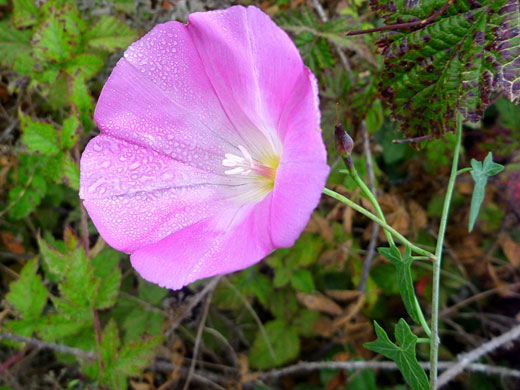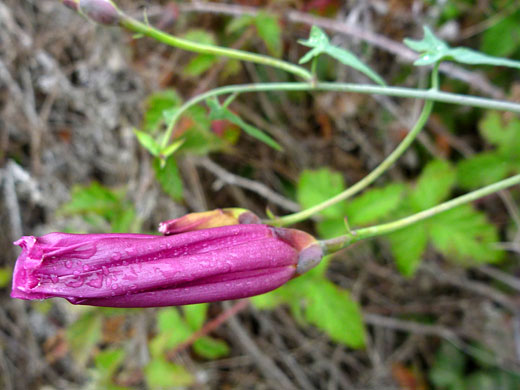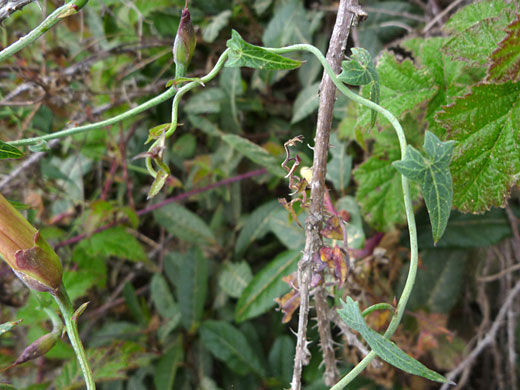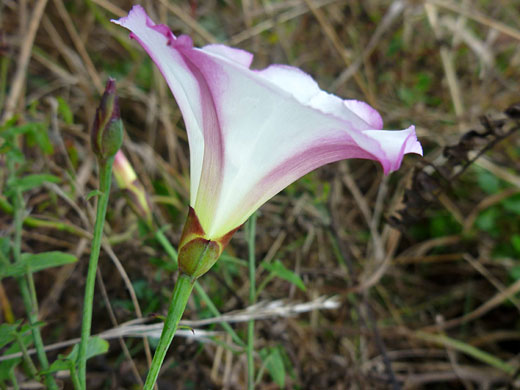Calystegia Purpurata, Pacific False Bindweed
Plants > Wildflowers > Convolvulaceae > Calystegia Purpurata
Common name:
Pacific false bindweed
Family:
Scientific name:
Calystegia purpurata
Main flower color:
Range:
Coastal areas of California
Height:
Up to 15 feet or more; a creeper, growing on other plants
Habitat:
Coastal bluffs, chaparral, valleys; below 1,000 feet
Leaves:
Triangular to kidney-shaped, up to 2 inches long
Season:
May to July
Calystegia purpurata is a coastal species, found only in California, where it grows right by the shoreline and across the nearby hills and valleys. Plants are creepers, or climbers, using other vegetation for support. The narrow stems bear dark green leaves at quite well-spaced intervals; the leaf blade extends backwards below the attachment point, and both projections have 2 or 3 small lobes. Leaves are crossed by prominent lighter veins.
Flowers form singly or in small clusters; they are relatively large, up to 2 inches in diameter, typically significantly wider than the leaves. The corolla is purple or pale yellow, white at the base, and may have darker lengthwise stripes, radiating from the middle.
Ssp purpurata is found along the whole length of the coast and in inland regions; it has leaves with pointed tips, and climbing stems longer than 3 feet, while the less common ssp saxicola of coastal regions only (central and north) has leaves with acute tips, and trailing stems generally less than 3 feet in length.
Flowers form singly or in small clusters; they are relatively large, up to 2 inches in diameter, typically significantly wider than the leaves. The corolla is purple or pale yellow, white at the base, and may have darker lengthwise stripes, radiating from the middle.
Ssp purpurata is found along the whole length of the coast and in inland regions; it has leaves with pointed tips, and climbing stems longer than 3 feet, while the less common ssp saxicola of coastal regions only (central and north) has leaves with acute tips, and trailing stems generally less than 3 feet in length.
All Contents © Copyright The American Southwest | Comments and Questions | Contribute | Site Map





